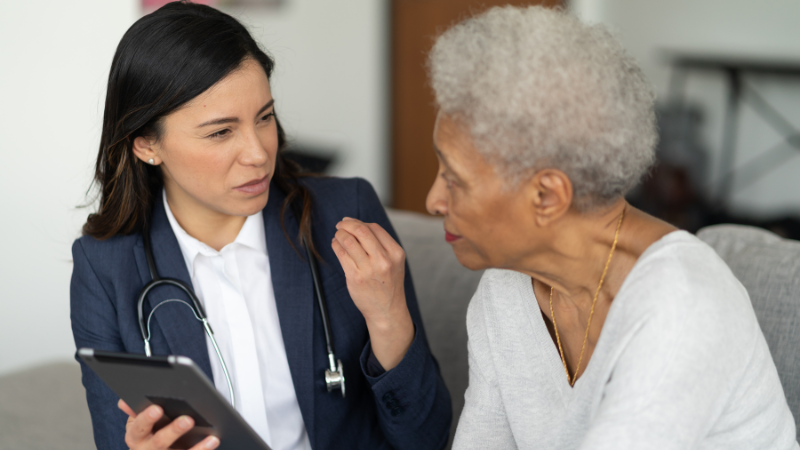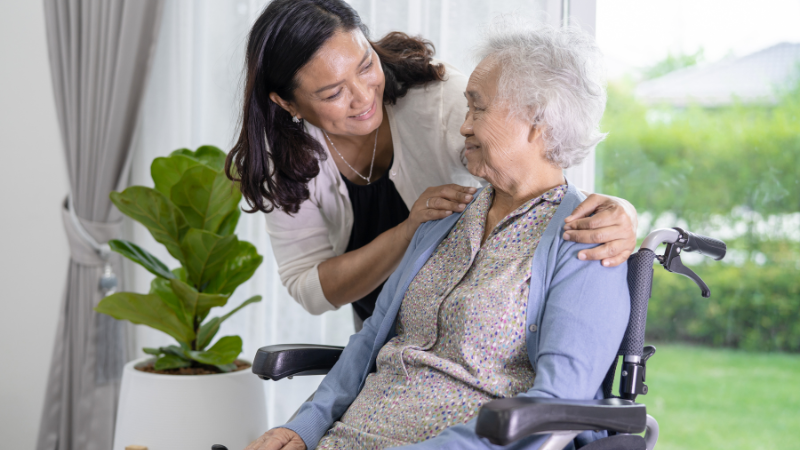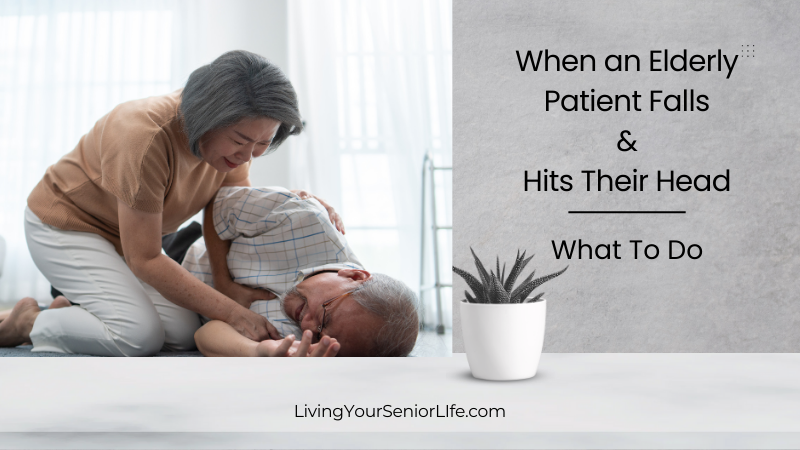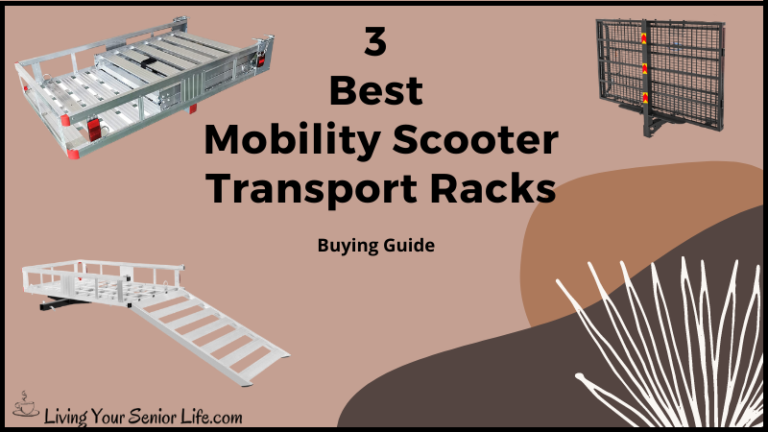Falls are a common and serious concern for elderly individuals, often leading to severe injuries and complications. When an elderly patient falls and hits their head, the situation becomes even more critical. Prompt and appropriate action can make a significant difference in their recovery and overall health.
In this blog post, we will explore the essential steps to take when an elderly patient experiences a fall and head injury, helping you respond effectively to ensure their safety and well-being.
Key Takeaways:
- Falls among elderly patients require immediate attention.
- Watch for signs of serious head injury and seek medical help.
- Prompt action and monitoring can save lives.
Immediate Response to an Elderly Person Falling
When an elderly person falls and hits their head, it can be a scary situation. Knowing what steps to take immediately is crucial to ensure their safety. It’s important to assess their condition, provide first aid, and decide whether to call 911 or their doctor based on the severity of symptoms.
Contacting a healthcare provider or calling 911 is essential if you observe any concerning symptoms. Keeping a close watch for symptoms, such as a severe headache, confusion, or changes in behavior, is crucial. Seeking timely medical help can be life-saving, prevent further damage, and aid in quick recovery.
Remember, it’s better to err on the side of caution when dealing with potential head trauma in older adults. Even a fall from a ground-level surface can result in serious injuries needing prompt medical evaluation. In these cases, professionals in the emergency department can perform necessary tests like a computed tomography (CT) scan to check for internal injuries.
Initial Assessment and First Aid
First, check the state of consciousness of the elderly person. If they are awake, ask questions to assess their memory and orientation. Look for physical signs such as bumps, bruises, or bleeding, especially around the head.
Gently help them to a sitting position to avoid further injury. Notice any feelings of pain, weakness, or confusion. Watch for symptoms like headache, dizziness, or loss of balance. If they’re on blood thinners, the risk of bleeding is higher, and you must be especially cautious.
Apply clean bandages to any open wounds if there is bleeding. If they show signs of a severe injury such as vomiting, a severe headache, or if they lose consciousness, these could indicate a more serious head injury like a subdural hematoma or skull fracture. It’s essential to stay with them and ensure they remain comfortable.
When to Call 911
Call 911 if the elderly person has any of the following symptoms: loss of consciousness, severe headache, vomiting, seizure, or significant confusion. Also, if they have memory loss or if the injury seems severe with possible skull fractures or a subdural hematoma, immediate medical help is necessary. Pay attention to signs of concussion like persistent confusion or severe headaches.
Diagnostic Procedures Following a Fall

When an elderly person falls and hits their head, immediate and thorough diagnostic measures are crucial. This involves a clinical examination and necessary imaging or laboratory tests to rule out severe injuries like subdural hematomas and ensure appropriate medical treatment.
Falls often result in serious injuries for older patients. Hip fractures and broken bones are frequent outcomes that often require hospital visits and long recovery periods. Head injuries are also common; these can range from mild traumatic brain injury to severe head injury and subdural hematoma.
Head trauma may lead to symptoms like loss of consciousness, severe headache, and memory loss. Elderly individuals are at a greater risk for these injuries due to weaker blood vessels and reduced muscle strength. Immediate medical attention is crucial to prevent complications. In particular, be aware of signs like a sudden state of unconsciousness or severe headaches, which warrant urgent care.
Clinical Examination by a Doctor
A healthcare provider will first perform a clinical examination. They will check the patient’s state of consciousness using tools like the Glasgow Coma Scale.
Assessing the ability to respond to questions and follow simple commands is important. Difficulty speaking, memory loss, or cognitive impairment may indicate a serious head injury.
The doctor will also examine any physical injuries. This includes checking for skull fractures, bruises, or broken bones from the fall. Evaluating motor skills and muscle strength can identify risks for future falls and determine the need for physical therapy.
Blood pressure and heart rate measurements help detect low blood pressure, a common issue in elderly patients. These measurements can highlight the risk factors that led to the fall in the first place.
Imaging and Laboratory Tests
Following the clinical exam, imaging tests like a computed tomography (CT) scan are often necessary. CT scans can quickly identify subdural hematomas, epidural hematomas, and other severe injuries.
Early detection of intraparenchymal hemorrhages and bleeding blood vessels is crucial for planning immediate medical treatment.
MRI scans might follow if the CT scan results are inconclusive. They offer a detailed view of brain tissue and can detect even mild traumatic brain injuries.
Laboratory tests, including blood tests, can identify underlying medical conditions. These may include blood thinners and other medications that increase the risk of severe injury from falls.
Regular follow-ups and communication with the health care provider ensure that any side effects or symptoms like confusion, severe headache, or vision problems are monitored over time. This comprehensive approach helps improve the quality of life and reduces the risk of falls in older adults.
Treatment and Rehabilitation

Proper care and support for elderly patients who have experienced head injuries are crucial. Immediate attention is essential to prevent complications, while long-term rehabilitation focuses on improving their quality of life and preventing future falls.
Immediate Care for Acute Injuries
When an elderly person falls and hits their head, immediate medical attention is crucial. You should check for signs such as loss of consciousness, severe headache, or any visual disturbances. If there are any symptoms of a severe injury, like a subdural hematoma or skull fracture, call emergency services right away.
First aid includes keeping the person’s head and neck stable and checking their state of consciousness. Apply pressure to any bleeding wounds. Avoid moving the person unless absolutely necessary to prevent further injury. Blood tests and a computed tomography (CT) scan may be performed at the hospital to evaluate the extent of the injury. Early intervention by healthcare providers can prevent further brain tissue damage and complications such as seizures or cognitive impairment.
Long-Term Recovery and Support
Long-term recovery involves a combination of rehabilitation, physical therapy, and creating a safe home environment to prevent future falls. Physical therapists work with patients to improve muscle strength, balance, and coordination. This can be vital in mitigating the risk of falls, which is a leading cause of traumatic brain injuries in older adults.
Rehabilitation may also involve cognitive exercises to address any memory loss or cognitive decline resulting from the head trauma. Medical professionals often suggest regular exercise and in-home safety appraisals to reduce potential hazards. Monitoring the patient’s blood pressure and managing other medical conditions, such as heart disease, is also necessary for a safe recovery.
For ongoing support, consider family members or caregivers trained to watch for any concussion symptoms or signs of worsening conditions. The goal is to enhance the patient’s overall health and prevent any complications that could arise from future falls or injuries.
Medical Management and Considerations

When an elderly person falls and hits their head, addressing the potential complications is crucial. Proper management involves reviewing medications and continuously monitoring chronic conditions to prevent worsening symptoms and future falls.
Medication Review and Adjustments
Reviewing an elderly patient’s medications is essential since some drugs increase fall risk. Blood thinners like anticoagulants, aspirin, and warfarin can elevate the risk of severe injury, such as subdural hematoma, if head trauma occurs. A healthcare provider should evaluate these medications to decide if adjustments or alternatives are needed.
Older adults on multiple medications might experience side effects like dizziness or low blood pressure, increasing fall risk. Monitoring these side effects helps reduce the likelihood of future falls. Adjustments to dosages or switching to medications with fewer side effects can greatly reduce risk factors for serious head injuries.
Monitoring and Managing Chronic Conditions
Chronic conditions often complicate recovery from head injuries. Patients suffering from atrial fibrillation, heart disease, or cognitive impairment like dementia need careful monitoring. These conditions can worsen with head trauma, requiring immediate and tailored medical attention to maintain quality of life.
Elderly individuals with chronic conditions should have regular check-ups with their healthcare provider. Conditions like dehydration and poor vision increase the risk of falls. Ensuring these issues are well-managed can prevent falls in the first place, reducing emergency department visits and improving overall safety.
Preventing Future Falls
Preventing falls involves a multifaceted approach. Conduct in-home safety appraisals to identify potential hazards. Grab bars in bathrooms, near toilets, and in showers provide extra support for older adults at risk of falls. Assistive devices like walkers and canes can improve stability and reduce the chance of ground-level falls. It’s also a good idea to remove any rugs or secure them to avoid tripping hazards.
Vision problems can increase the risk of falls; therefore, regular eye check-ups are essential. Lighting should be adequate in all areas of the home to prevent trips and falls. Considering memory problems and cognitive impairment, installing reminders and safety checks through a mobile phone or other devices can help ensure the elderly person takes the necessary precautions.
In-home safety appraisals by professionals can identify risks and suggest improvements tailored to the specific needs of the elderly patient. These measures collectively help mitigate risks and provide a safer living environment for older people.
Regular physical therapy or exercise can enhance balance and strength, reducing fall risks.
By understanding and addressing these factors, you can take active steps to prevent falls in older adults.
Education and Resources for Caregivers
Caregivers play a pivotal role in preventing falls and ensuring the independence of elderly patients. Understanding the risk factors like low blood pressure, muscle weakness, and medication side effects is essential. Regular communication with a healthcare provider for updates on medical conditions and treatment can greatly benefit the patient’s care plan.
Educational resources on first aid and recognizing concussion symptoms can prepare caregivers to respond promptly to head injuries. Offering knowledge about the symptoms of serious head injuries, such as severe headaches or loss of consciousness, ensures they seek timely medical help.
Encouraging regular exercise tailored for the elderly can maintain their mobility and muscle strength. Programs available through local health centers and online courses offer convenient ways for caregivers to learn and stay informed. A physical therapist can also provide exercises to improve muscle strength and balance, reducing fall risks.
Empowering caregivers with the right tools and knowledge significantly contributes to maintaining the independence of elderly individuals.
Conclusion
Knowing what to do when an elderly patient falls and hits their head is crucial for their immediate and long-term health. By staying calm, assessing the situation, and seeking medical attention you can provide the best care possible in such emergencies.
Always remember that prevention is key, so taking measures to reduce fall risks in the first place can greatly enhance the safety and quality of life for elderly individuals. Stay informed and prepared to handle these incidents with confidence and compassion.






